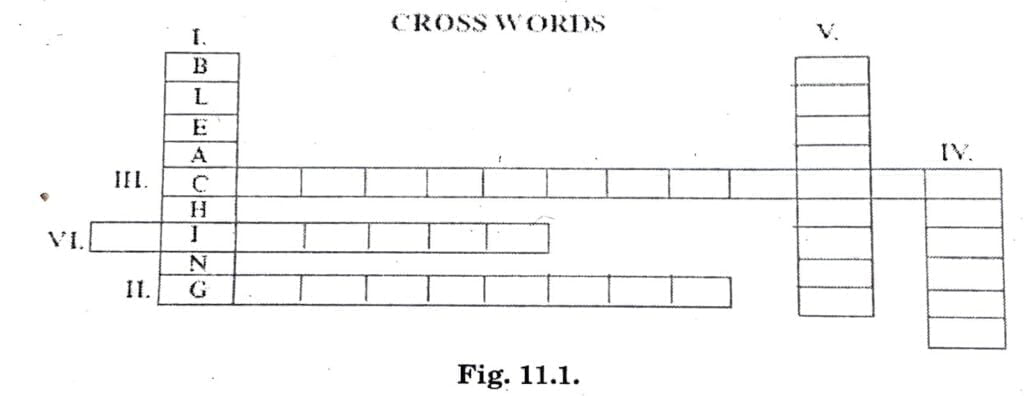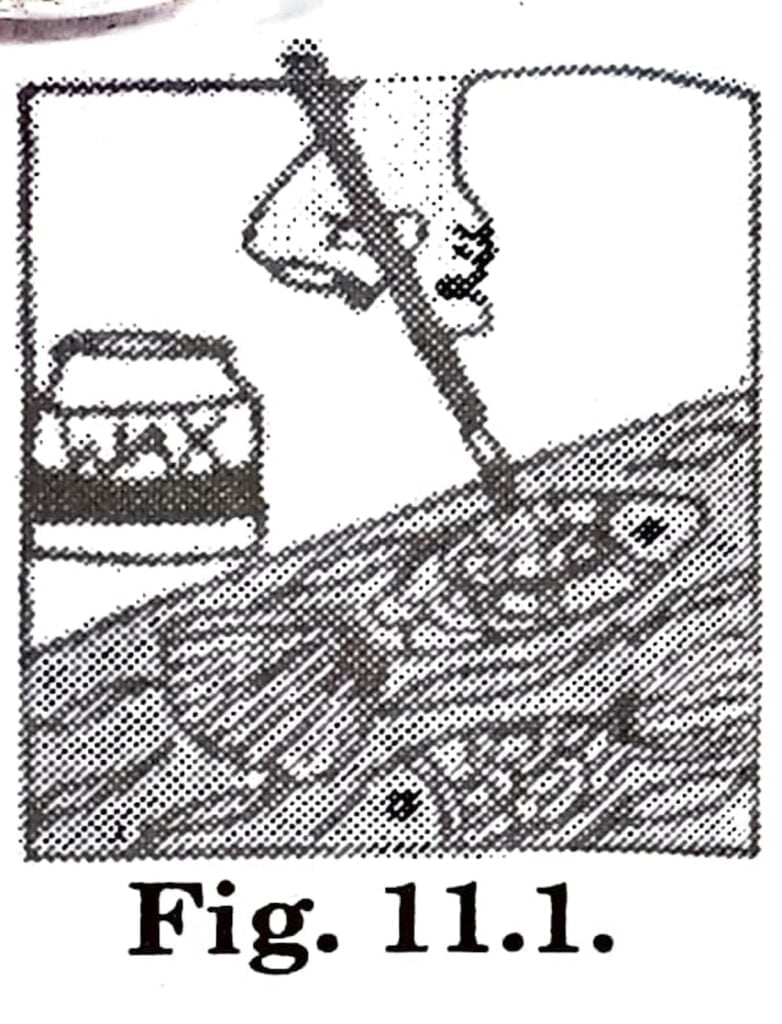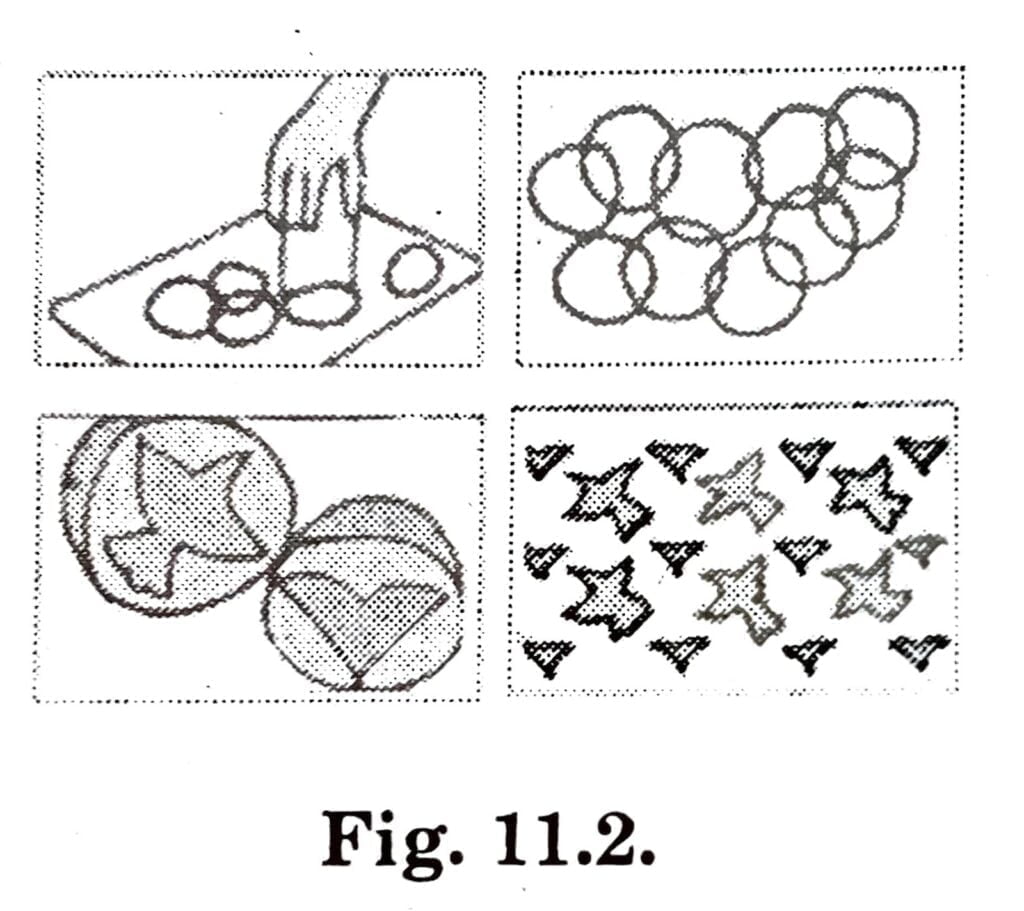NIOS Class 10 Home Science Chapter 11 Fabric Finishes Solutions to each chapter is provided in the list so that you can easily browse through different chapters NIOS Class 10 Home Science Chapter 11 Fabric Finishes and select need one. NIOS Class 10 Home Science Chapter 11 Fabric Finishes Question Answers Download PDF. NIOS Study Material of Class 10 Home Science Notes Paper 216.
NIOS Class 10 Home Science Chapter 11 Fabric Finishes
Also, you can read the NIOS book online in these sections Solutions by Expert Teachers as per National Institute of Open Schooling (NIOS) Book guidelines. These solutions are part of NIOS All Subject Solutions. Here we have given NIOS Class 10 Home Science Chapter 11 Fabric Finishes, NIOS Secondary Course Home Science Solutions for All Chapters, You can practice these here.
Fabric Finishes
Chapter: 11
[Book – I] HOME SCIENCE
TEXTUAL QUESTION WITH ANSWERS
Intext Questions 11.1
Q.1. Fill in the blanks after unscrambling the clues in the brackets:
(i) The treatment given to fabrics to enhance their appearance, performance or handling is known as _________ (N I F S I H E).
Ans: Finishes.
(ii) When no finish is applied on a fabric’s surface it is known as _________ fabric (R A Y G).
Ans: Gray.
(iii) _________ and _________ produce variety in fabric (Y E D I N G, N I N G P R I T).
Ans: Dyeing and printing.
(iv) A chemical finish is also known as _________ (ETW- ISHFIN).
Ans: Wet finish.
(v) Water proof finish is a _______________finish. (NCFUTIONAL).
ANS: Functional.
Intext Questions 11.2.
Q.1. State true or false and explain if the answer is false.
(i) Scouring is a finish used to clean the fabric. (True/ False)
Ans: True, scouring is washing fabric with soap and chemicals to remove all impurities.
(ii) Bleaching has no damaging effect on fabric.(true/ false).
Ans: False, Bleaching has to be done very carefully. It destroys the colour. Strong bleach can damage the fabric to some extent.
(iii) Shrinkage control can be done at home also.(True/ False)
Ans: True, soaking the fabric overnight and drying it causes Shrinkage.
(iv) Organdy is a permanently stiff fabric.(True/ False)
Ans: True, this is due to a permanent finish called parchmentisation.
(v) Mercerized thread should be used for stitching. (True/ false)
Ans: True, mercerization makes cotton smooth, shiny and strong.
Q.2. Fill in the blanks with the suitable word given at the end of each sentence:
(i) Mercerisation is _________ finish. (renewable/durable)
Ans: Durable.
(ii) Shrinkage control is indicated as _________ on the label.(sanforised/ parchmentisation)
Ans: Sanforised.
(iii) Wash n wear is a _________ finish. (routine/special)
Ans: Special.
(iv) If the colour does not bleed on washing, it means fabric is____________ _______________(water proof/ colour fast).
Ans: Colour fast.
Intext Questions 11.3.
Q.1. Fill in the blanks:
(i) Vegetables and animal dyes are known as _________ .(natural/artificial)
Ans: Natural dyes.
(ii) Tyrian purple dye is obtained from _________ source. (natural/animal)
Ans: Animal.
(iii) Fibre dyeing is more popular in ____________ fibres. (Man- made synthetic).
Ans: Manmade.
(iv) Tie and dye is _________ dyeing.(resist/discharge)
Ans: Resist.
(v) At home fabric can be decorated easily by _________ printing. (Block/roller)
Ans: Block.
Q.2. Look at the grid given below, followed by statements. The answer to each statement is in a single word. Fill in the word in the grid at its respective numbers. The first one is done for you.

I. It is a chemical treatment given to a fibre, yarn or fabric to remove yellowing.
Ans: Bleaching.
II. The term used for fabrics that come directly from loom.
Ans: Gray goods.
III. Also known as wet finishes
Ans: Chemical finish.
IV. It makes fabric heavier, stiff and crisp.
Ans: Starch.
V. It makes cotton fabrics easy to maintain.
Ans: Wash ‘N Wear.
VI. It is one of the tie and dye technique.
Ans: Binding
Terminal Exercise
Q.1. What is a textile finish? Why is it necessary to apply on fabric?
Ans: A finish is a treatment given to a fabric to change its appearance, bundling/touch or performance. It’s purpose is to make the fabric more suitable for its end use.
Importance of Textile Finishes:
1. Improve the appearance of fabric and enhance its looks.
2. Produce variety in fabrics through dyeing and printing.
3. Improve the feel or touch of fabric.
4. Improve the draping ability of light weight fabrics.
Q.2. How does a gray fabric differ from a finished fabric?
Ans:
| Unfinished/ Gray fabric | Finished fabric |
| Dull looking, available only in natural colours- off white, brown, black, etc. | Lustrous, attractive, available in different tints and shades of colours, prints, etc. |
| Wrinkled, stained with broken threads, uneven in width, etc. | Smooth and wrinkle- free, no defects on the surface, even width, free from stains, etc. |
| Relatively less expensive. | Cost of fabric depends upon the type of the fibre along with the number and type of finishes applied. |
| Lack customer appeal, are purchased only for rough work, backing, packaging, etc. | Customers get attracted and buy. |
Q.3. Describe any two basic finishes and their application.
Ans: Mainly finishes can be divided into two categories:
1. Basic finishes: Some finishes are considered basic finishes because they are essential for all types of fabrics, cleaning, ironing bleaching, sizing etc.
2. Special finishes: Some finishes are given to enhance the utility of fabrics for special purposes.
3. For example: Water proofing is done only on that fabric for which water proofing is must like rain coat, tarpaulins. etc. Similarly other special finishes are mercerising dyeing, printing, shrinkage, control etc.
Q.4. The sewing thread Ritu brought had the label Mercerized. Give the advantages of ‘mercerization’ and explain the process of mercerization to Ritu.
Ans: Advantage of Mercerization: Cotton is basically a dull fibre. The fabric made from cotton wrinkles easily and is Difficulty to dye. It is therefore, treated with sodium hydroxide to make it strong, lustrous and absorbent. This process is called mercerization. It also improves the dye uptake of fabrics.
Process of mercerization:
1. The fabric is strong and durable.
2. The fabric is more compact.
3. Glazeness and lustre of the fabric given it a silent look.
4. Absorbency of the fabric increases.
5. Affinity for dyes increases.
6. Dyed in fast colours.
Q.5. “Dyeing is finishing with colour”. Explain.
Ans: “A dye is a compound that can be fixed on a surface in a more or less permanent state, the avokes the visual sensation of a specific colour. Dyeing gives a solid colour to the fabric. It is very important for the dyed and printed fabric to be colour fast. Example the colour should not comes out or fade easily.
Q.6. Differentiate between natural and synthetic dyes.
Ans: (i) Natural dyes: these were the first dyes known to mankind. These are obtained from natural sources – vegetables, animals or minerals. These are eco-friendly and do not pollute water or land. The residue of these days can be sefely used as fertilizer in the fields. But the process of dyeing with natural dyes is slow, difficult and expensive. Major natural dyes obtained from plants are turmeric (haldi), henna (mehndi), madder (manjishta) and indigo (neel). While tyrian purple and lac dyes are obtained from animal source. Khakhi dye comes from a mineral source.
(ii) Synthetic Dyes: These days are prepared synthetically with the help of different chemicals. These differ in their chemical composition and behaviour. Popular classes of synthetic dyes are – direct, basic, acid, disperse, azo, vat and reactive days. These days cause a lot of pollution and skin allergies etc. Some of these days such as azo are very harmful for human health and their use has been banned. Synthetic dyes are very easy to use and have better fastness than natural dyes. These also give a brighter and larger colour range.
Q.7. You have just bought a shirt that has a label “Piece dyed”. What do you understand from it? What are the other methods of dyeing Textiles?
Ans: Before the stitching clothes may used different types of dye. Different stages at which textiles are dyed include:
(i) Fibre stage: Thought all types of fibres can be dyed at this stage, the method is more popular for dyeing man made fibres. It gives uniform dyeing and it is coloured fibres during subsequent processing.
(ii) Yarn Stage: Colour can be applied or rendered (popular term used in textile dyeing) on fibres after spinning into yarns, especially when they have to be sold as such. Knitting yarns and all types of threads – sewing, embroidery, crocheting, etc. are dyes at this stage.
(iii) Fabric stage: Most of the dyeing in the Textile industry is done at this stage, and fabrics are dyed in one solid colour. It gives uniform colouring. Colour matching becomes easier at this stage. This method is also suitable for dyeing blended fabric. Blends are made by mixing two fibres together and then made into a yarn and fabric.
Q.8. Describe batik and block printing.
Ans: (i) Batik: Batik is also a method of resist dyeing. Hero, wax is used as a resist material to prevent the dye from colouring certain areas. On selected areas of the fabric, a mixture of Bees’ wax and paraffin wax is filled with a brush or a block, according to the design. These areas do not get coloured when dyed giving a patterned effect. The wax is leter removed.

(ii) Block Printing: Here a wooden block, which has a design engraved on it, is pressed into a thick dye paste and then stamped on to the fabric. Do not worry if you do not have a wooden block. You can follow the same procedure for printing at home using easily available objects in place of a block. Take any vegetables like ladies ‘ finger or onion or gourd (torai), cut and use it as a block. Even bowl, glasses leaves and flowers can also be used for printing.

SOME OTHER IMPORTANT QUESTIONS FOR EXAMINATION
Multiple Choice Questions
Tick (✔) the correct answer:
1. Which of the following is a basic finish?
(a) Water proofing.
(b) Stiffening.
(c) Printing.
(d) None of the above.
Ans: (b) Stiffening.
2. Which of the following is applied to almost all fabrics to improve their appearance?
(a) Basic finishes.
(b) Special finishes.
(c) Finishing with colour.
(d) None of the above.
Ans: (a) Basic finishes
3. Oil spots from the fabric are removed by:
(a) Bleaching.
(b) calendering.
(c) Scouring.
(d) None of the above.
Ans: (c) Scouring.
4. To make fabrics white or to dye them in light colours they are:
(a) Bleached.
(b) Stiffened.
(c) Cleaned.
(d) All of the above.
Ans: (a) Bleached.
5. Which of the following is an is ironing process?
(a) Calendering.
(b) Stiffening.
(c) Scouring.
(d) Cleaning.
Ans: (a) Calendering.
6. Which of the following bleach is applied to all kinds of fabrics?
(a) Hydrogen chloride.
(b) Hydrogen peroxide.
(c) Carbon dioxide.
(d) Hydrogen sulphide.
Ans: (b) Hydrogen peroxide.
7. The alkali used in Mercerisation is:
(a) Hydrogen peroxide.
(b) Hydrogen sulphide.
(c) Hydrogen chloride.
(d) Sodium hydroxide.
Ans: (d) Sodium hydroxide.
8. Why do we dye fabrics?
(a) To give colour to the fabric.
(b) To improve the looks of the fabric.
(c) Both ‘a’ and ‘b’.
(d) None of the above.
Ans: (c) Both ‘a and ‘b’.
9. Which of the following is obtained from plants?
(a) Saffron, indigo.
(b) Henna, onion chilka.
(c) Tesu flowers, katha.
(d) All of the above.
Ans: (d) All of the above.
10. The process of resist dyeing is termed as:
(a) Tie and dye.
(b) Marbling.
(c) Binding.
(d) Knotting.
Ans: (a) Tie and dye.
11. The dye used for cotton is:
(a) Vat.
(b) Disperse .
(c) Reastive/Direct.
(d) Basic.
Ans: (c) Reastive/ direct.

Hi! my Name is Parimal Roy. I have completed my Bachelor’s degree in Philosophy (B.A.) from Silapathar General College. Currently, I am working as an HR Manager at Dev Library. It is a website that provides study materials for students from Class 3 to 12, including SCERT and NCERT notes. It also offers resources for BA, B.Com, B.Sc, and Computer Science, along with postgraduate notes. Besides study materials, the website has novels, eBooks, health and finance articles, biographies, quotes, and more.


